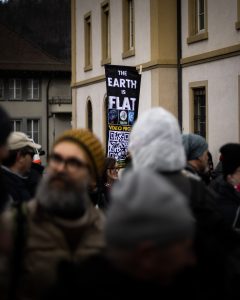In Fall 2023 and again in Spring 2025, I taught Texas State University’s graduate-level Social and Political Philosophy course. My aim was to design a syllabus that diverged from the typical political philosophy course, while nonetheless remaining steeped within the both the Western and the Eastern traditions of ideas. Drawing on critiques advanced by the contemporary French philosopher Alain Badiou, the course was intended to challenge the purportedly neutral, detached, and often purely contemplative field of study commonly referred to as “political philosophy.” As Christoph Schuringa has recently argued, the ongoing impact of McCarthyism is largely to blame for professional philosophy, political or otherwise, often operating as little more than “an extended apologia for American liberalism,” exchanging barren concepts like prepackaged commodities in the “marketplace of ideas.” On this account, the current assault on the university did not appear out of thin air, but is rather the culmination of a continuous historical process of repression and censorship that can be detected in even the most unassuming of college lecture halls. Therefore, if a philosophical education is to retrieve its original Socratic mission, then it must be remembered that the gadfly was martyred for engaging in a critical and subversive mode of thought that attacked the most sacrosanct and fiercely guarded conventions of his age.
Historical in scope, the first five weeks of the course are structured around Karl Jaspers’s Axial Age hypothesis, which identifies a period of parallel philosophical innovation (roughly 8th–3rd century BCE) across classical Greece, India, China, and West Asia. This framework allows the course to immediately assume a comparative approach while underlining a series of shared and recurring politico-philosophical concerns: the nature of justice; the scope of freedom; and the relationship between the individual and their community. In the ancient Greek context, we begin with Plato’s radical blueprint for the construction of an ideal pōlis detailed in the Republic (read in Badiou’s idiosyncratic translation), as well as the lesser-read Seventh Letter, where Plato recounts his bold attempt at the practical implementation of this thought experiment. Next, the class pairs a close reading of Aristotle’s modal doctrine in Book Θ of the Metaphysics with Book 1 of the Nicomachean Ethics in order to investigate how the ontological distinction between potentiality and actuality grounds his political theory. Perhaps the most taught philosopher in all of history, I often tell the students that I get a real kick out of teaching Aristotle, because I can imagine that, on this very same day, centuries back, both a medieval monk in a candlelit scriptorium and Seljuk prince in a Persian garden happened to be pouring over the very same texts.
After the classical Hellenic thinkers, we examine the Eastern expressions of the Axial Age. We read the Kandahar Greek Edicts of Ashoka (which I translated from ancient Greek for the class) and Sun Tzu’s Art of War. Finally, we close the Axial Age unit in West Asia with the Apostle Paul’s Epistle to the Romans, which is interpreted as a messianic revolutionary declaration through Jacob Taubes’ lectures on Paul. It always proves to be strangely revealing and provocative to collectively mine philosophical insights from the Pauline Letters in the very heart of the Bible Belt. Either way, whatever the classical text, I invariably direct the students to follow the method of immersion laid out by Machiavelli in his renowned letter to Vettori: “On the coming of evening, I return to my house and enter my study…I enter the ancient courts of ancient men…where I am not ashamed to speak with them and to ask them the reason for their actions.” At the same time, since it is just as important to situate these classical figures in today’s theoretical landscape, our discussion also includes supplemental literature from Giorgio Agamben, A. J. Bartlett, and Romila Thapar.
From there, the course recovers two often overlooked philosophical lineages: the Arab-Muslim Enlightenment and the Renaissance. In our study of Islamic philosophy, the focus is on Averroes’ Commentary on Plato’s Republic and Ernst Bloch’s Avicenna and the Aristotelian Left. Through these texts, we encounter a firmly scientific, naturalist, and materialist current that developed an exegetical form of presentation capable of both sustaining the Greek legacy and advancing it by privileging modal potentiality over actuality. In Renaissance thought, Machiavelli serves as our main figure, with readings from The Prince and Discourses on Livy, accompanied with a secondary text by Banu Bargu entitled “Machiavelli after Althusser.” Echoing Sun Tzu’s thought, Machiavelli articulates a thoroughgoing realism and a materialism that is both philosophically robust and practically astute. Furthermore, the weeks dedicated to Islamic and Renaissance philosophy can viewed as an attempt to redress their glaring omission from standard curricula, since their absence only distorts the history of philosophical progress.
In the week entitled, “Heresy in the Reformation,” we read Carlo Ginzburg’s The Cheese and the Worms about Menocchio, a 16th-century miller persecuted by the Inquisition for espousing his own unique brand of peasant religion fused with proto-scientific and materialist insights. This is juxtaposed with Gershom Scholem’s groundbreaking lecture on the widely-acclaimed Jewish messiah, Sabbatai Zevi. Scholem’s account of the movement surrounding Zevi returns us to the course’s concern with messianism as the politico-theological foundation of revolution; while the Kabbalistic justification for their beliefs emerge from same intellectual milieu as the Islamic philosophy of Andalusian Spain.
Arriving in the nineteenth century, the “Modern Socialism” unit compares three tendencies within the revolutionary workers’ movement—communism, anarchism, and Blanquism—in the respective textual forms of Marx and Engels’s Communist Manifesto, Bakunin’s “Program of the International Brotherhood,” and the Imaginary Party’s “To a Friend.” We then systematically evaluate the three revolutionary strategies on the basis of their distinct approaches to the state, historical roots in the French Revolution, engagements with Hegelianism, and their commitments to anti-clericalism and materialism. This sets the stage for the following week’s inquiry into the mature Marx’s scientific socialist treatment of political economy in the Grundrisse, which is read as a crucial but often overlooked alternative to the usual emphasis on Das Kapital. Significantly, in the “Fragments on Machines” section of Grundrisse, Marx’s notion of a “general intellect” both finds its precedent and further materializes the Islamic conception of Peripatetic potentiality previously advanced by Averroes. Core secondary literature for this section on the Grundrisse includes three chapters from Antonio Negri’s Marx Beyond Marx and Enrique Dussel’s commentary, “The Definitive Discovery of the Category of Surplus Value.”
Finally, the course closes with Walter Benjamin’s “Towards a Critique of Violence” and Simone Weil’s “Iliad: A Poem of Force.” Both anchored in the Greek epic tradition, we find that Weil’s account of force as reification is veritably equivalent to Benjamin’s critique of state power as mythic violence. However, what is distinct about Benjamins’s theoretical intervention is that he proposes a messianic solution to the problem of state violence by advocating for, what he interchangeably refers to, as pure, revolutionary, and/or divine violence. Structurally analogous to an Aristotelian potentiality without actuality, this notion of pure violence combines politics and theology, messianism and revolution, thereby concluding the course by bringing together several of its core themes.
Since there can no preassigned readings for the first day of class, we together peruse onsite the relevant course material for that particular session. For example, we try to collectively extract the political messages conveyed by the image of Ilya Repin’s painting—The Arrest of a Propagandist—reproduced on the front page of the syllabus. Later in the day’s lesson, each member of the class takes a turn reading a section from Benjamin’s “Theses on the Philosophy of History.” In thesis VI, Benjamin provides us with a single proposition that captures the overarching goal that this course strive for: “In every era the attempt must be made anew to wrest tradition away from a conformism that is working to overpower it.”
The Syllabus Showcase of the APA Blog is designed to share insights into the syllabi of philosophy educators. We include syllabi in their original, unedited format that showcase a wide variety of philosophy classes. We would love for you to be a part of this project. Please contact Series Editor, Cara S. Greene via cara.greene@coloradocollege.edu, or Editor of the Teaching Beat, Dr. Smrutipriya Pattnaik via smrutipriya23@gmail.com with potential submissions.
The post Social and Political Philosophy, Idris Robinson first appeared on Blog of the APA.
Read the full article which is published on APA Online (external link)





